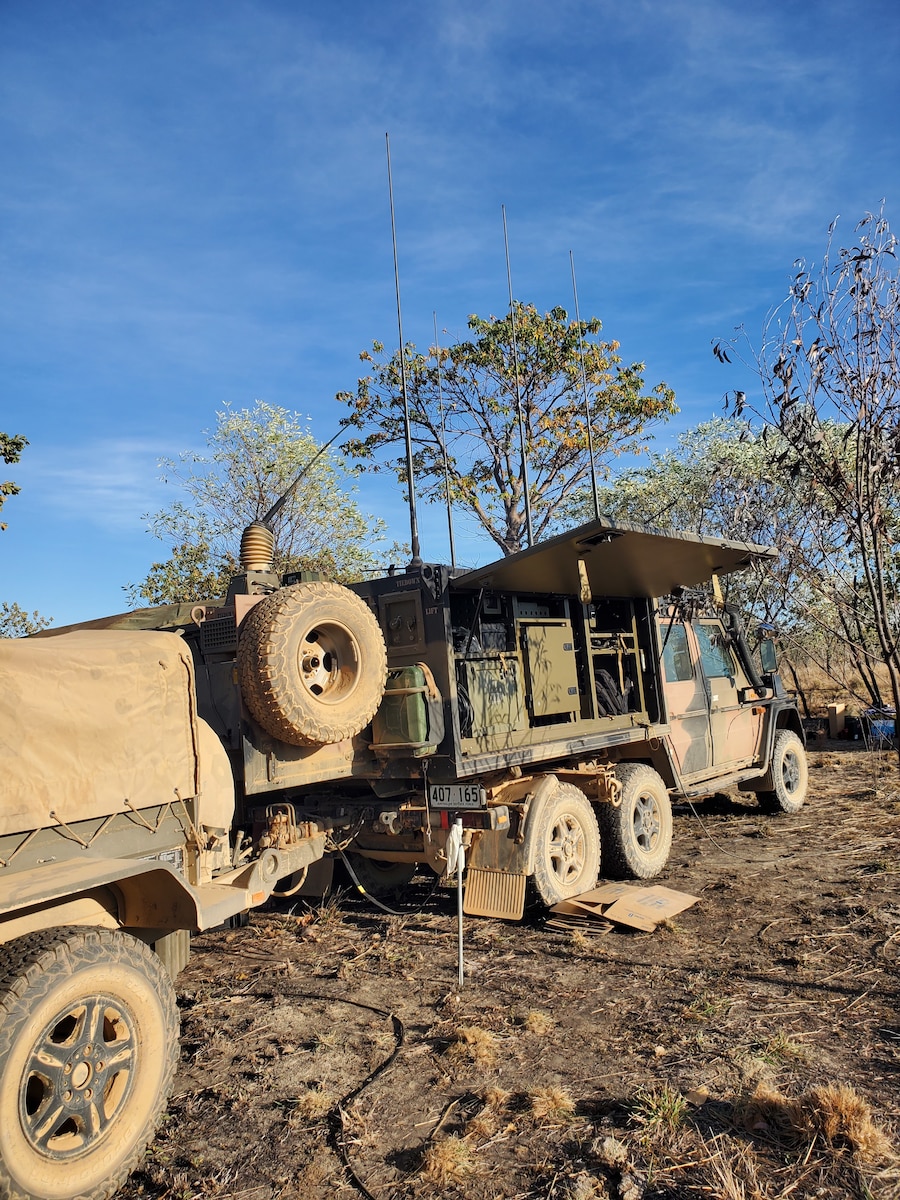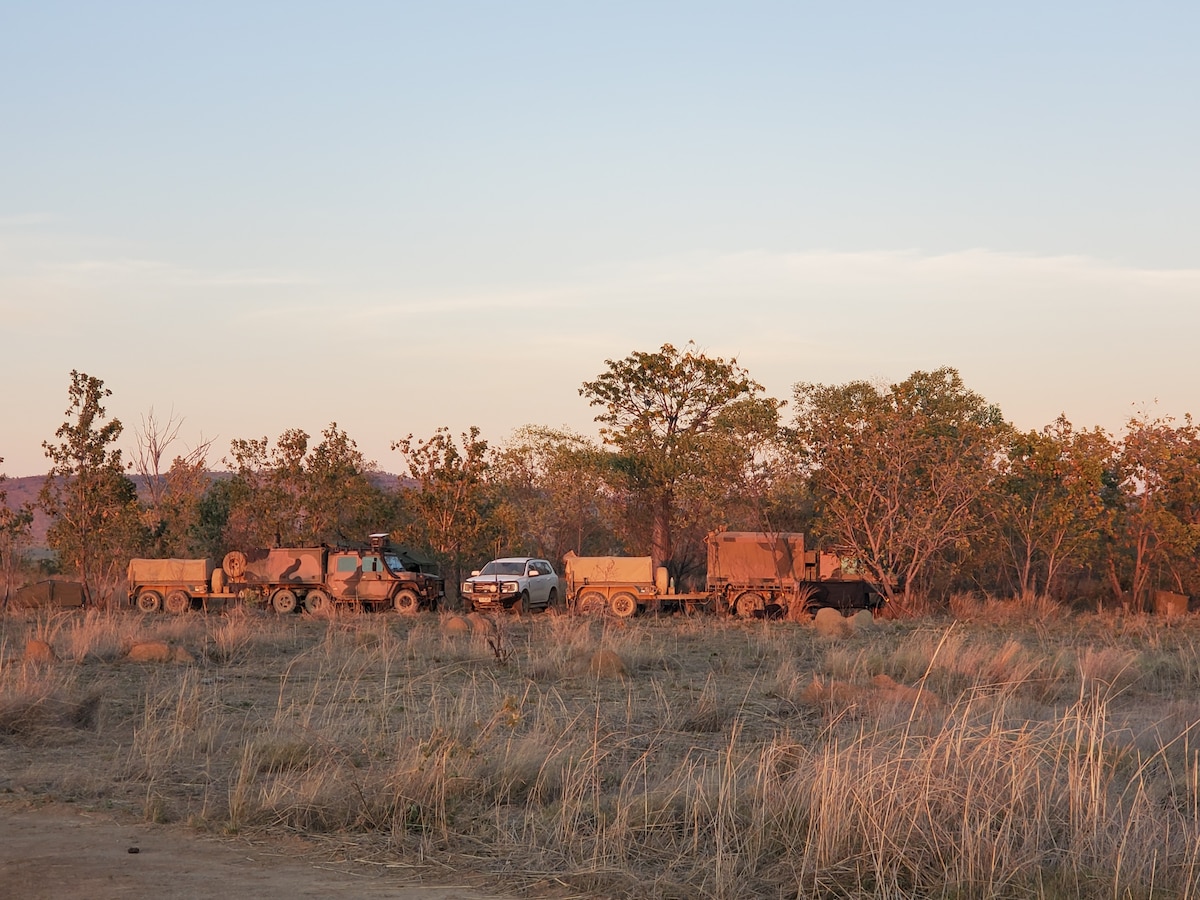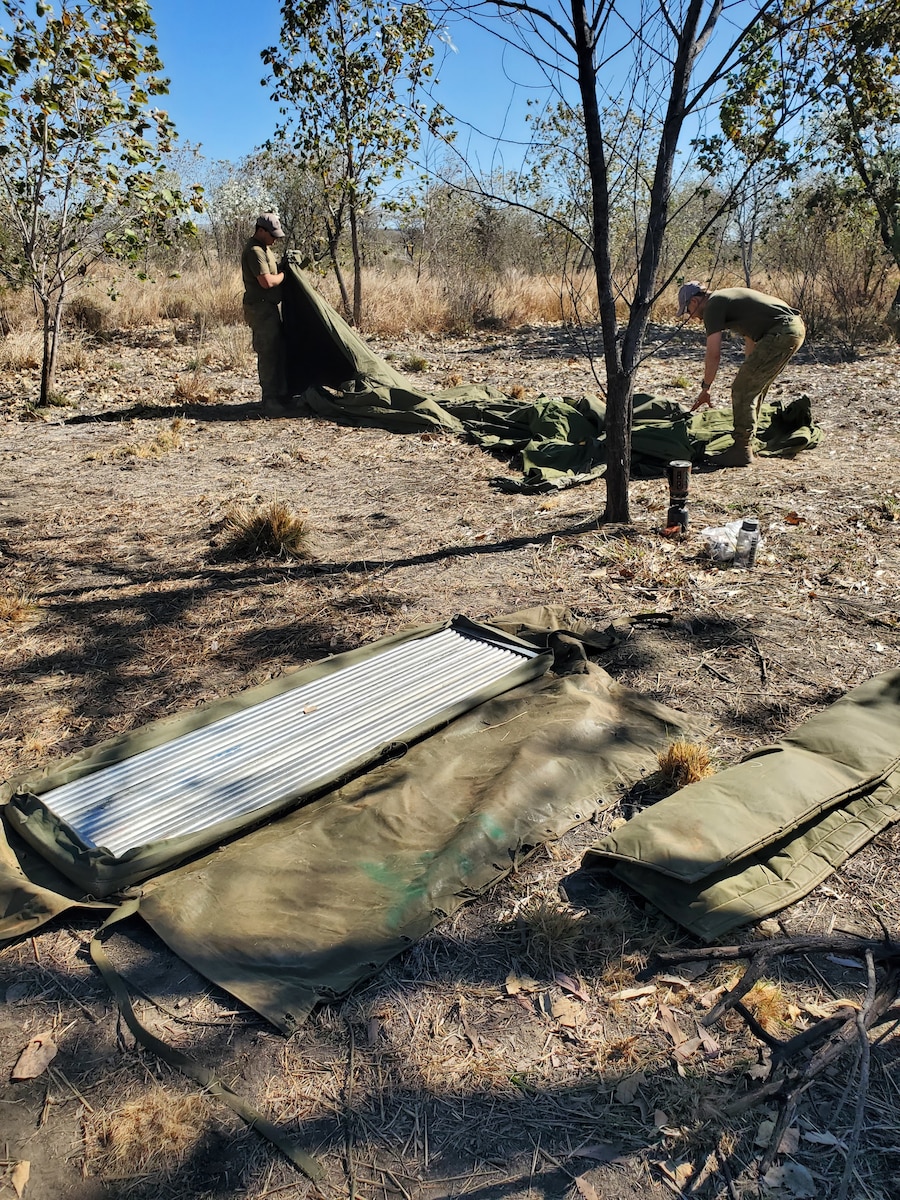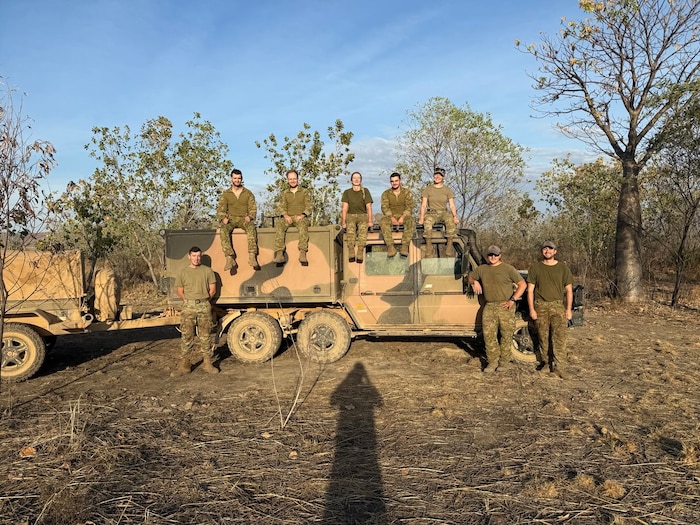On a dusty northern Australian airfield, deep in the heart of Exercise Talisman Sabre 2025, a small but powerful coalition team is proving that command and control doesn't just happen in the sky. From the ground, a combined U.S. and Australian battle management command and control element is operating in real time to manage the fight, respond to threats and deliver effects across the battlespace.
This ground-based integration effort is a core part of the 55th Wing-led exercise Talon Shield, which falls under the broader Talisman Sabre 2025 umbrella. The 552nd Air Control Wing's presence at TS25 is part of this overarching effort, showcasing the U.S. Air Force's deployable combat wing model in action. Whether operating from remote outposts in Northern Australia or established airfields to the south, these Airmen are proving that combat power doesn't require massive infrastructure - just the right people, the right partners and the readiness to operate anywhere.
At the center of this effort is the Royal Australian Air Force 114 Mobile Control and Reporting Unit's Bandicoot Team, where U.S. Air Force air battle managers and weapons directors from the 552nd ACW are working shoulder to shoulder with RAAF ground-based C2 experts. The Bandicoot system is closely aligned with the U.S. Air Force's prototype Tactical Operations Center-Light. Both are built for rapid mobilization, agility and survivability, offering flexible solutions to plug critical C2 gaps across the area of responsibility.
"Building this kind of interoperability is a combat multiplier," said U.S. Air Force Maj. Kathryn Martin, the Mission Generation Force Element lead based out of RAAF Base Edinburgh, United Kingdom. "When we act with common purpose and in common cause, we strengthen not only our alliance, but our ability to respond to any threat in the region."
Martin's team is embedded with the RAAF's Bandicoot Ground Theater Air Control System, which excels in contested and degraded environments. The integration of U.S. and Australian forces at the tactical edge ensures readiness across distributed operations.
Among the U.S. contingent, U.S. Air Force 1st Lt. Kaitlin Volk and Tech. Sgt. Peyton Shaffer from the 752nd Operations Support Squadron - Air Combat Command's TOC-L Pathfinder Unit - are stationed at Bandicoot Node 1 in Northern Australia. Alongside seven RAAF partners, they perform battle management duties including aircraft fuel and weapons coordination, threat tracking and missile defense measures.
"This exercise has been an invaluable opportunity to operate alongside our allies and quickly respond to operations in the Indo-Pacific region, while helping shape the future of TOC-L," Volk said. "Sharing best practices, we've discovered through trial and error is allowing us to expedite TTP development and focus on the future fight."
The partnership is also making a strong impression on the RAAF personnel involved.
"This is the first time I've gotten to work alongside USAF members here in Australia," said Flight Lieutenant Joshua White, a RAAF air battle manager. "We get the opportunity to go to exercise Red Flag and work with Americans there, but having them embedded in our team here, in this region, has been great for interoperability and relationship building."
"It's good to work with partners and allies and develop personal relations at the operator level," added Flight Lieutenant Daniel Hand, another RAAF ABM. "It's nice knowing we have friends in other countries that are willing to step up and fight alongside us."
The team's work is critical to enabling the long-range kill chain - linking airborne ISR platforms like the RC-135V/W Rivet Joint and RQ-4 Global Hawk with ground-based C2 systems like Bandicoot and the RAAF E-7 Wedgetail. Their integration accelerates decision-making and tightens the sensor-to-shooter loop across thousands of miles.
The mission, executed during 15 days of flying operations from July 7 - 25, demonstrates how integrated ground and airborne command elements can deliver effects with speed and precision.
Throughout the exercise, U.S. and Australian members are refining TTPs for disaggregated C2. The lessons learned here will inform future coalition operations and enhance how allies operate together in the Indo-Pacific.
"Operating in a coalition environment brings its own challenges but also its opportunities. This is one of those 'once-in-a-career' experiences for our Airmen and we're so grateful to be here," Martin said. "Every time we transform a system, adapt to a new process or align with a new team, we strengthen our foundation. We grow our ability to survive, fight and win in any environment."
"Our Airmen are thriving in this environment because this is exactly what we prepare them for," said U.S. Air Force Col. Kendrick L. Carroll, 552nd Air Control Wing commander. "Working with our Australian teammates in this demanding, dynamic setting proves that our unmatched network of alliances isn't just enduring, it's operational. And it's a decisive edge."
In a region where speed, reach and precision can mean the difference between deterrence and escalation, the combined U.S. and Australian Bandicoot team is building the foundation for success.
These Airmen and their RAAF counterparts aren't just controlling the skies. They are proving that when it counts, our network of allies can strike first, strike fast and strike together.
U.S. Air Force and Royal Australian Air Force Base Members, part of a combined U.S. and Australian Battle Management Command and Control element, pose for a photo with a RAAF Bandicoot system at Bandicoot Node 1 in Northern Australia during Exercise Talon Shield. The mission, executed during 15 days of flying operations from July 7 - 25, 2025, demonstrates how integrated ground and airborne command elements can deliver effects with speed and precision. (Courtesy photo)










